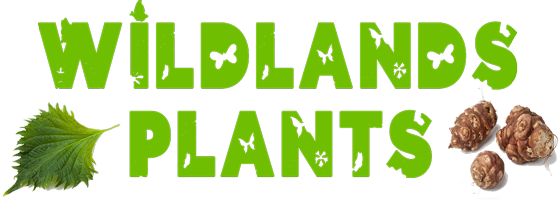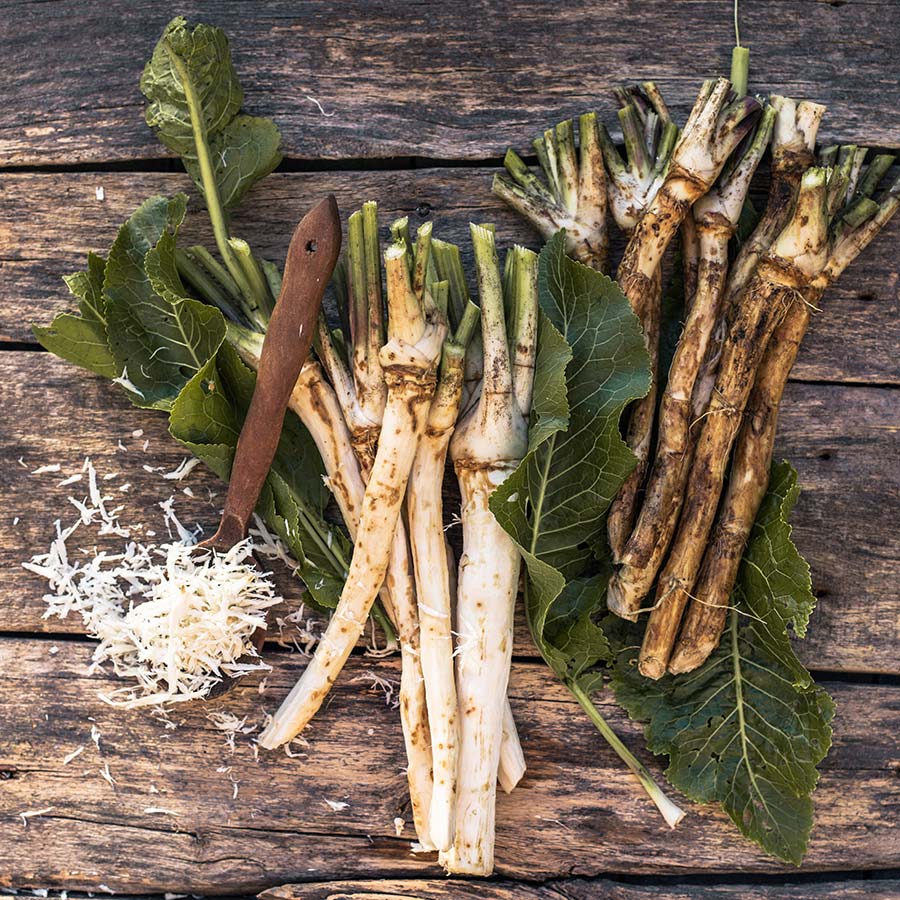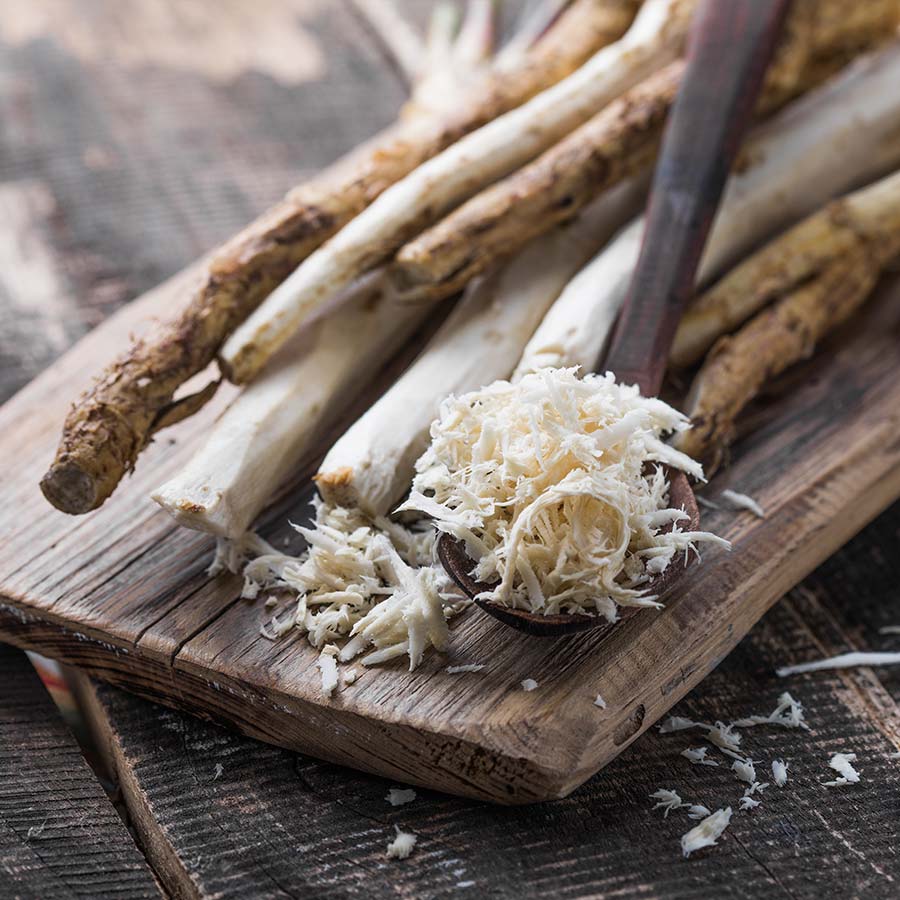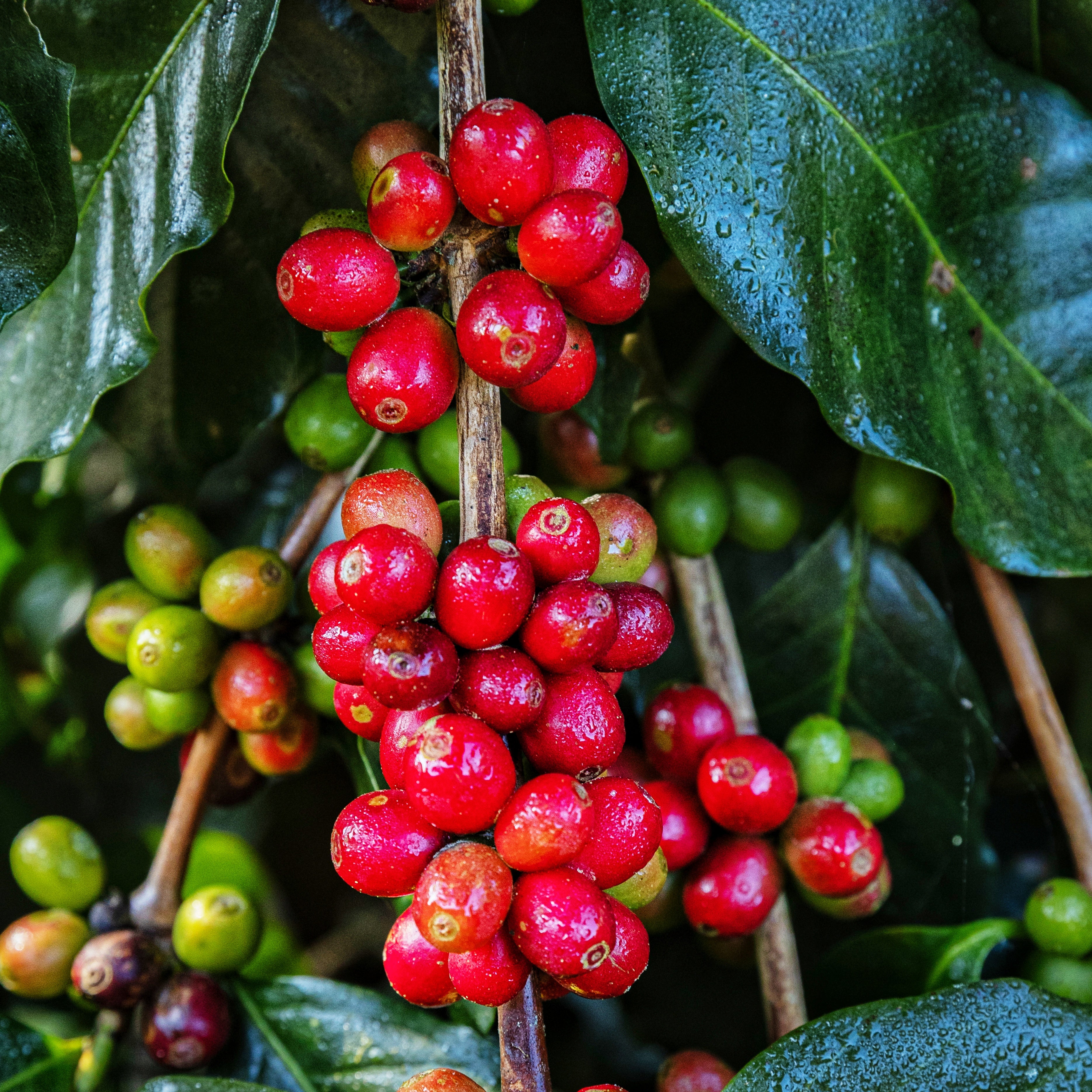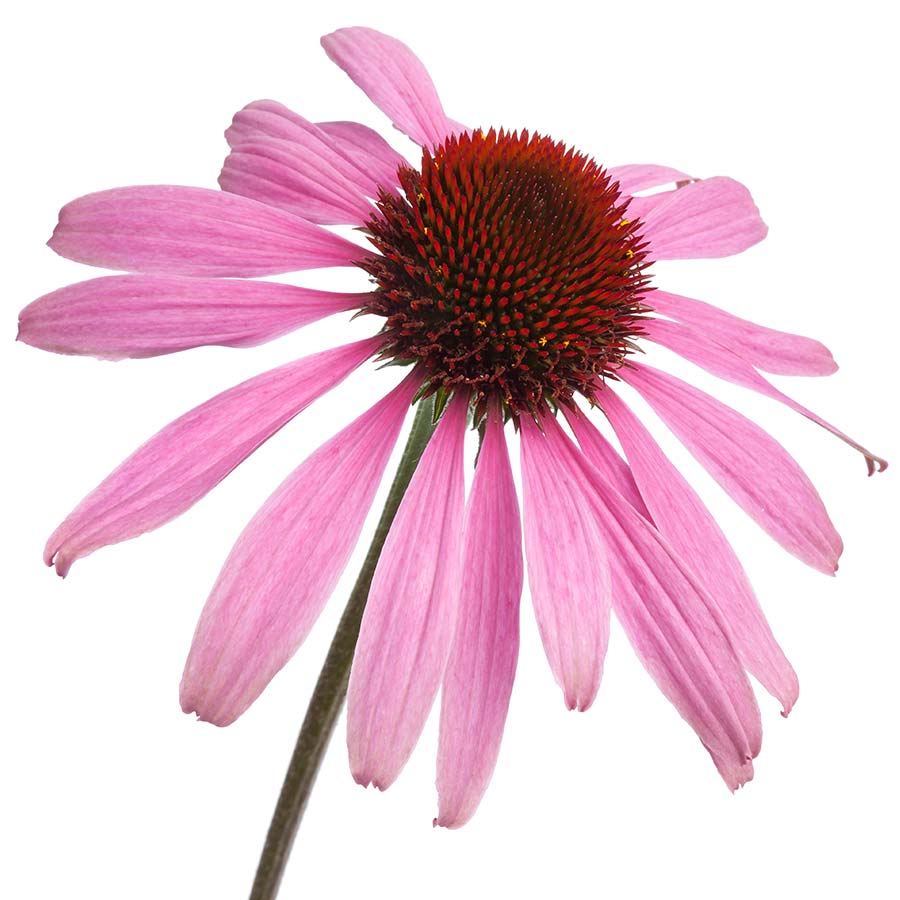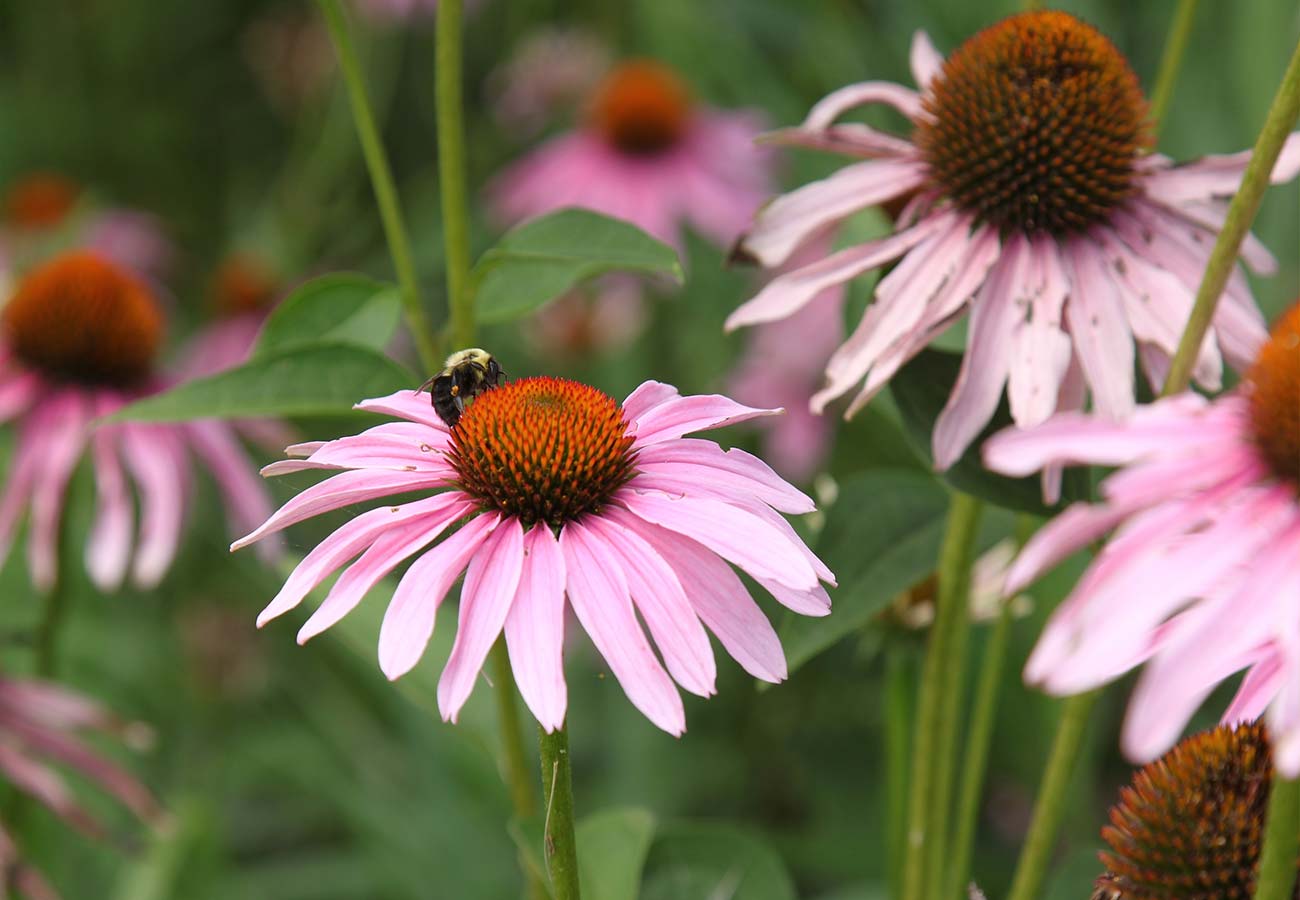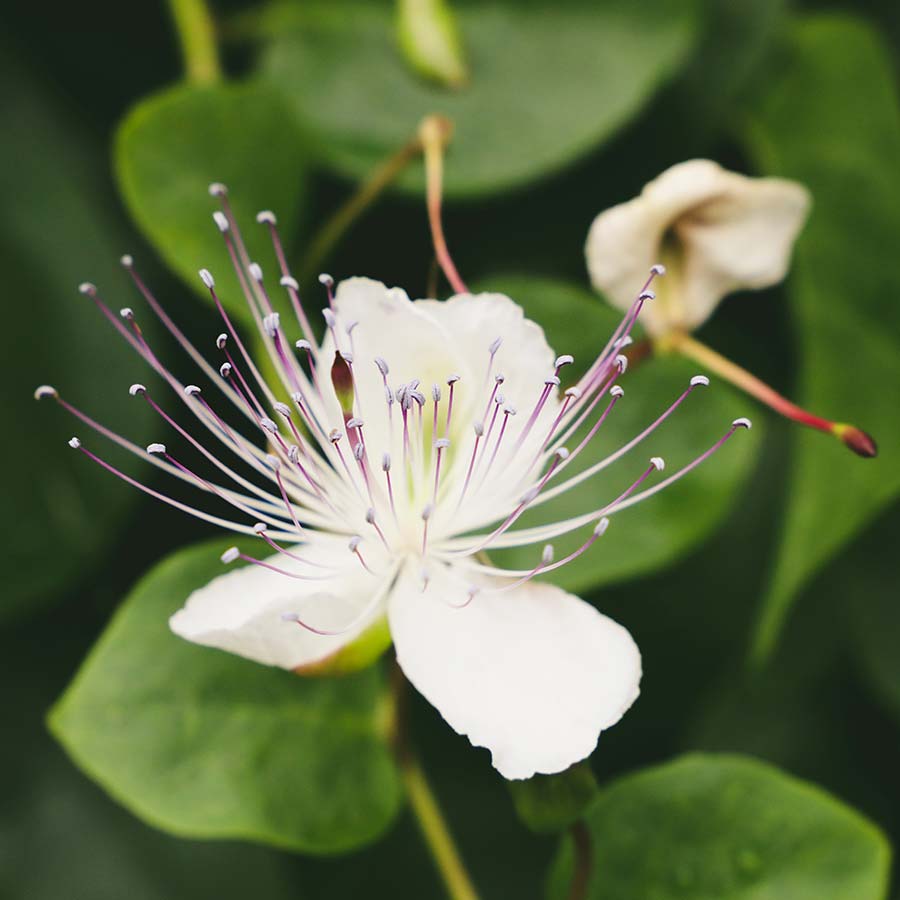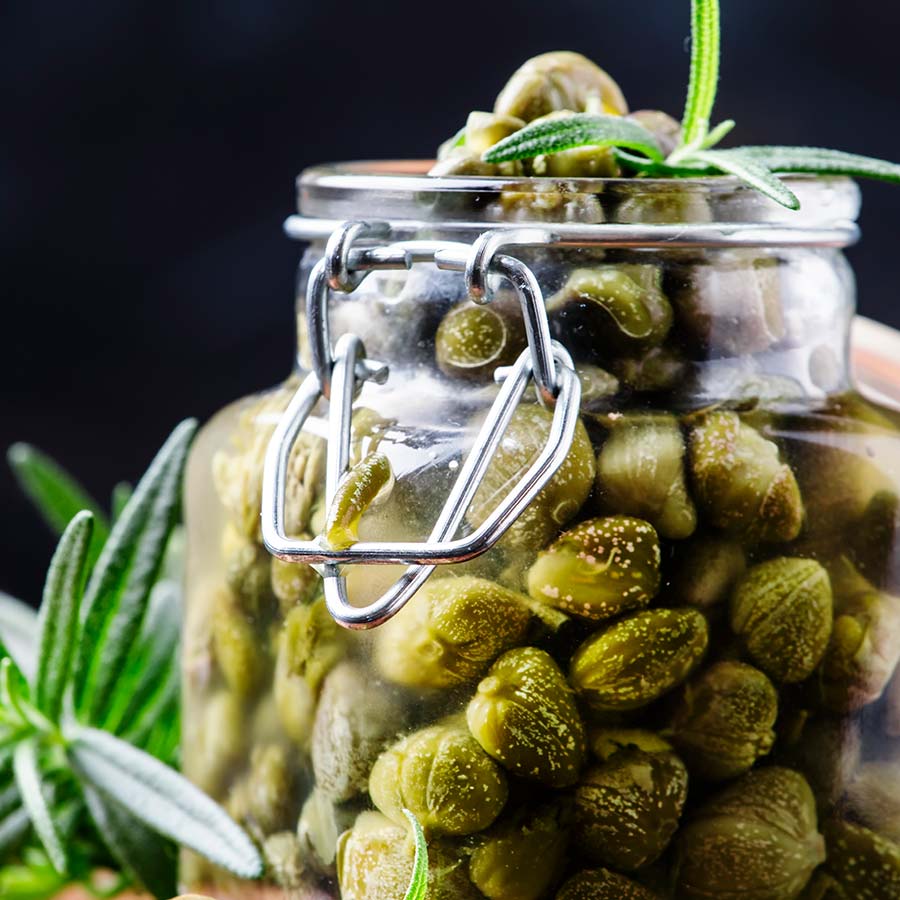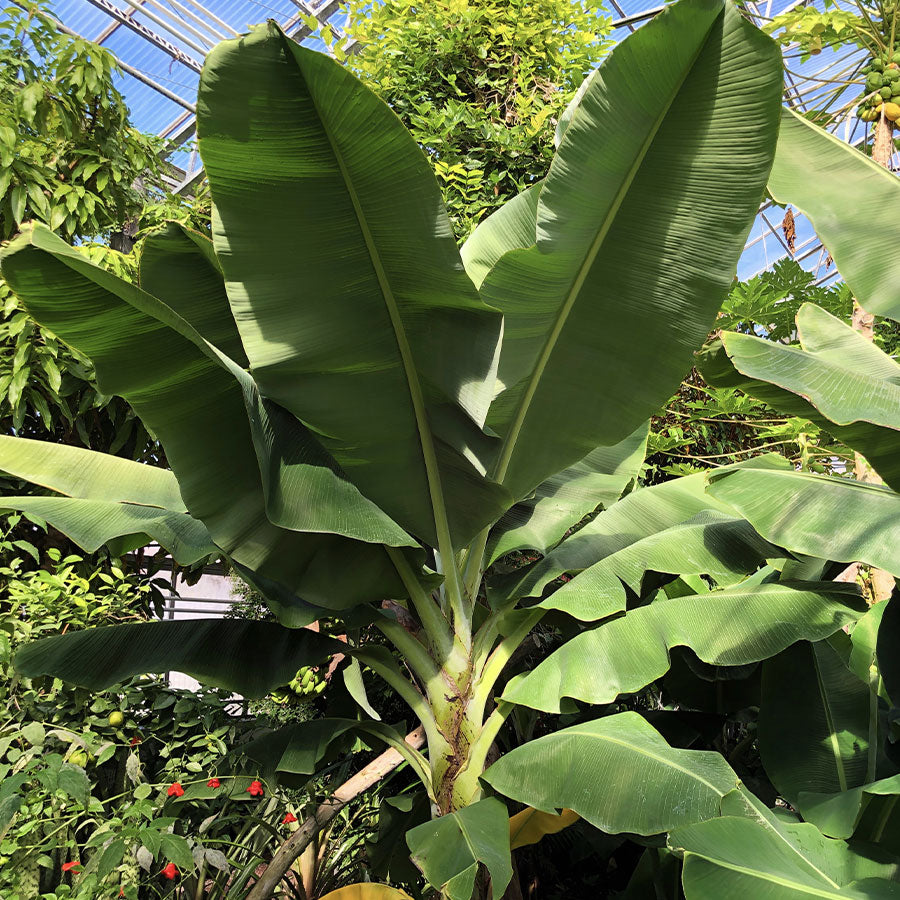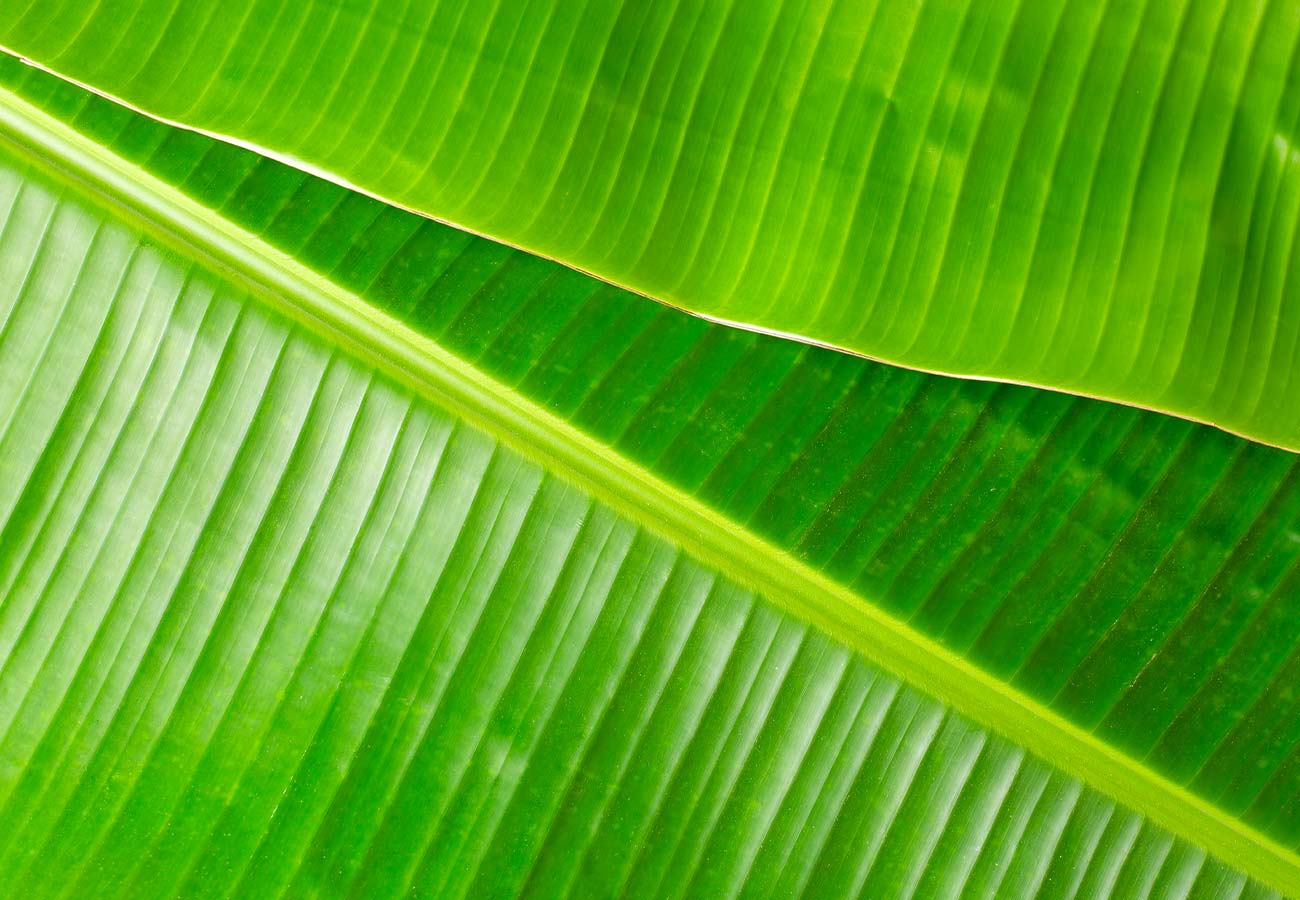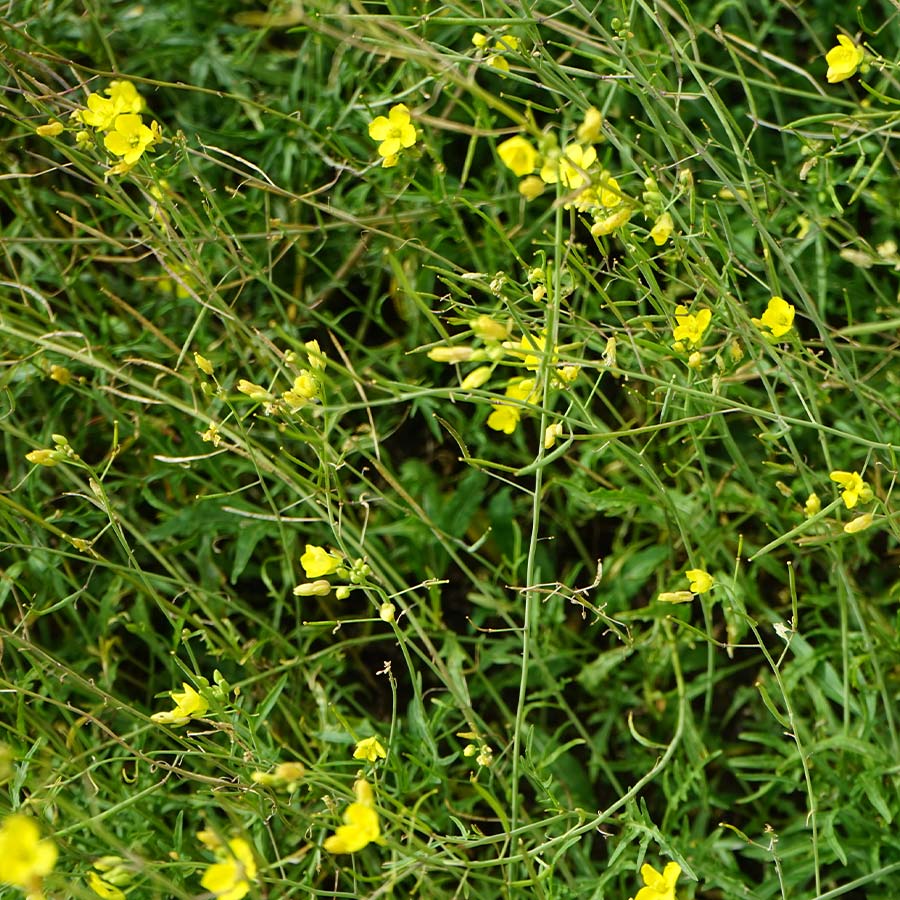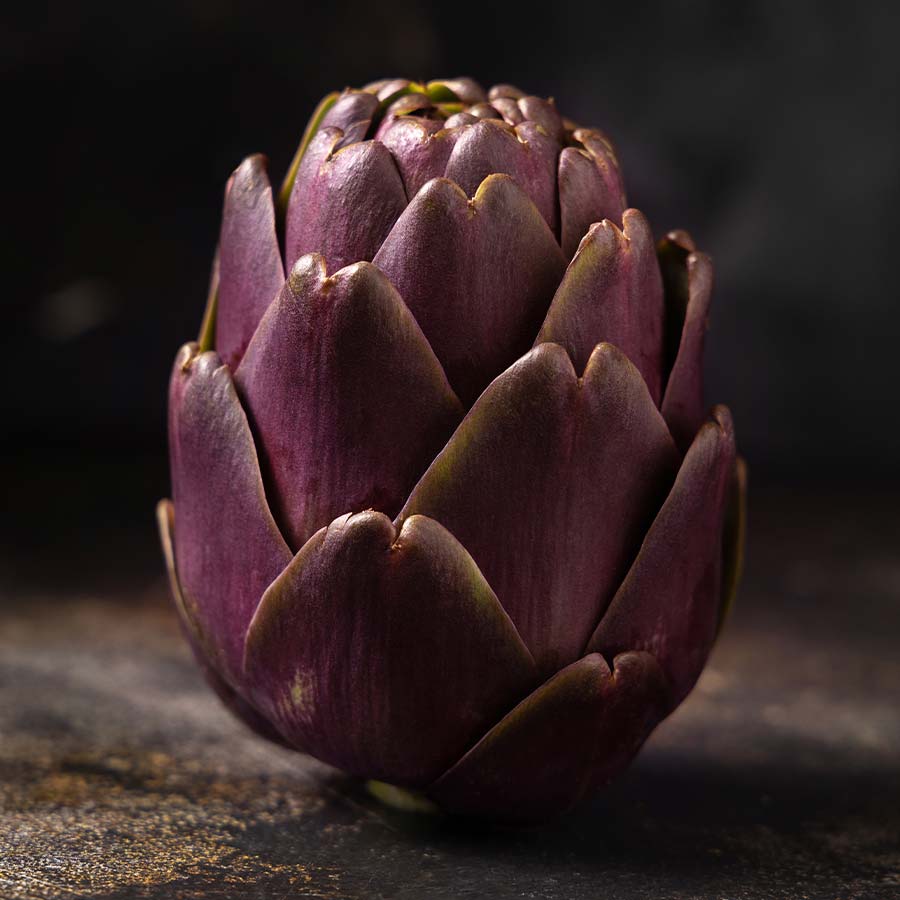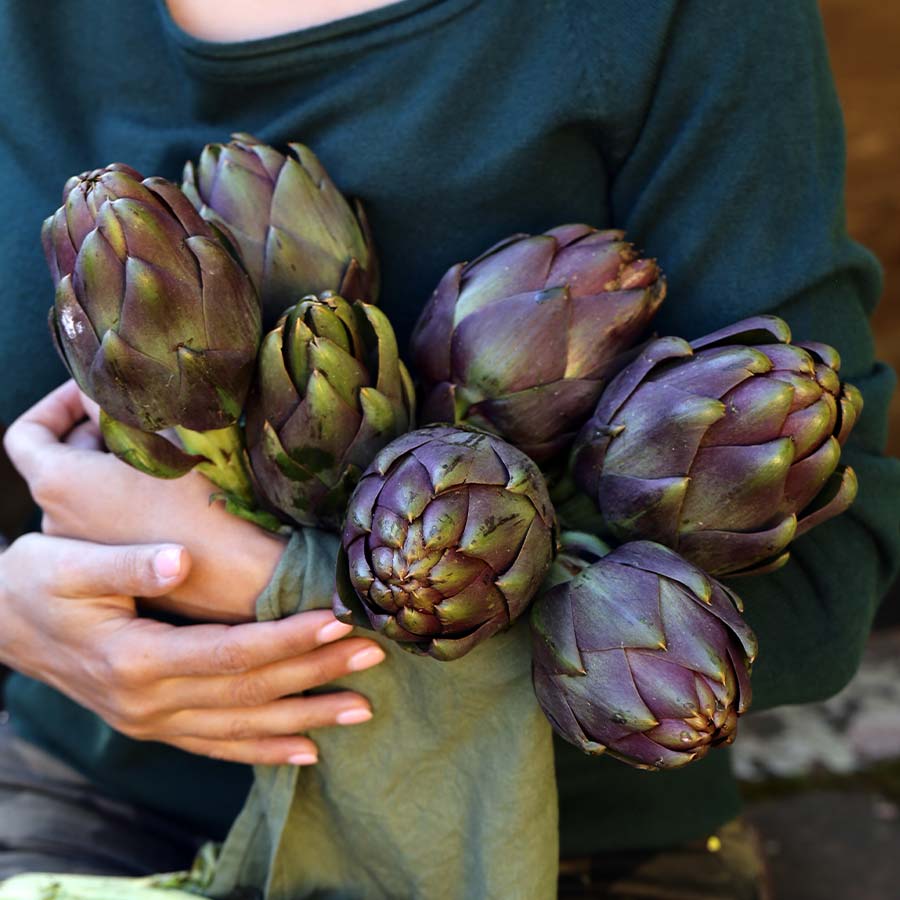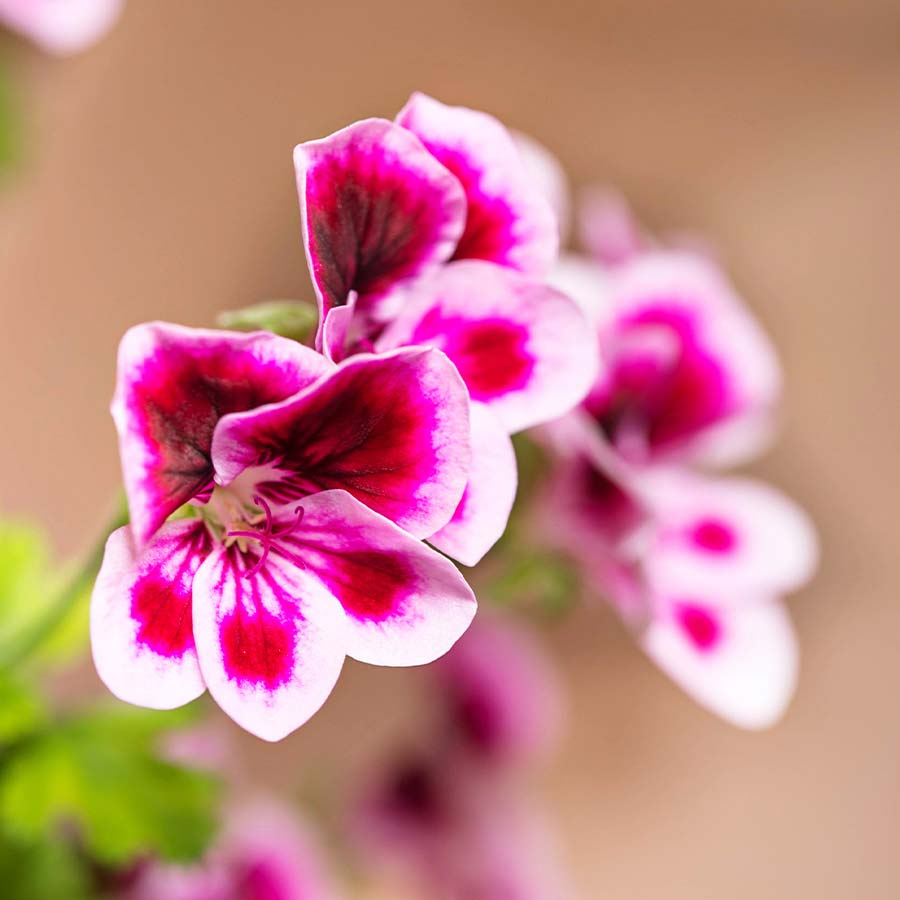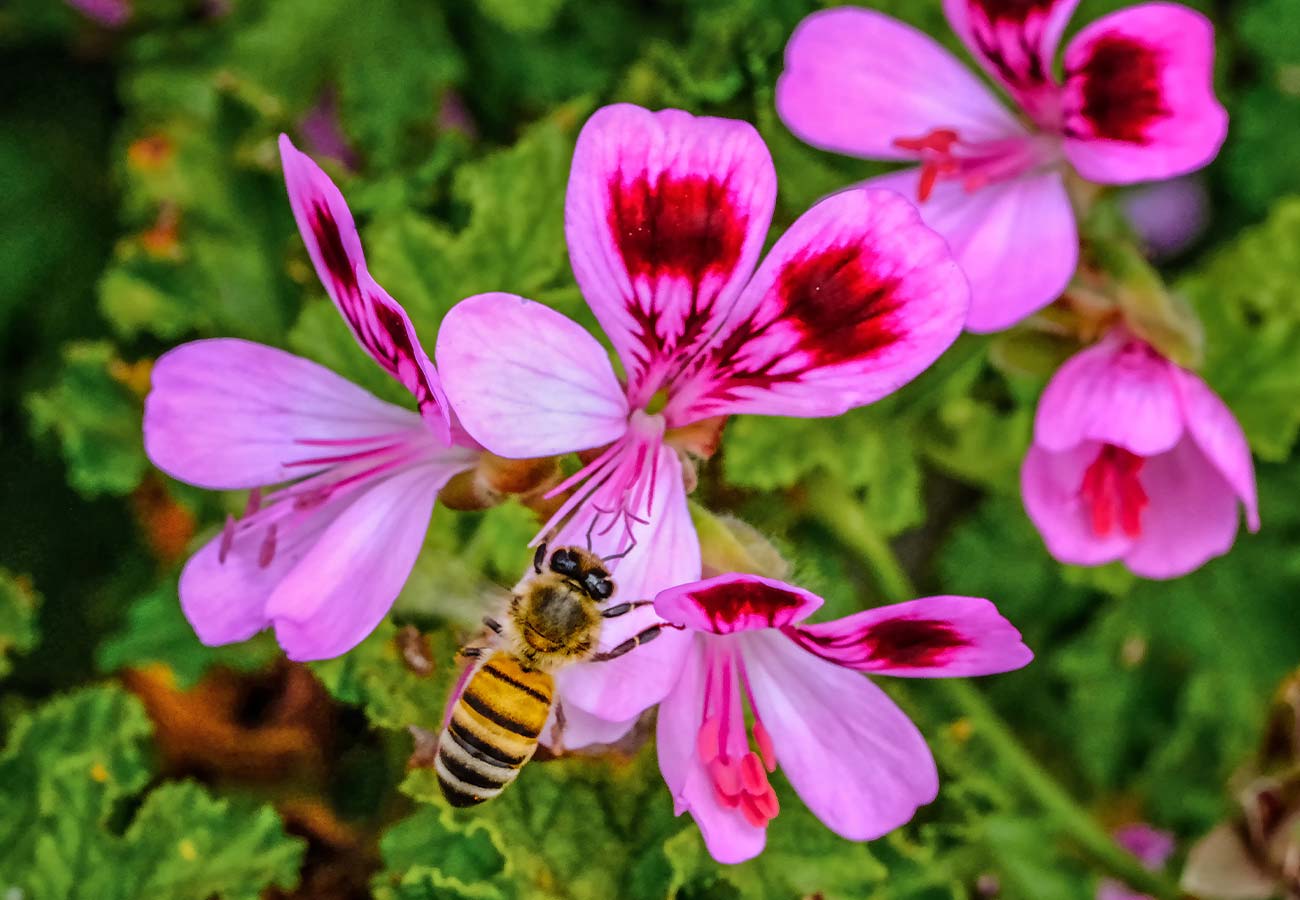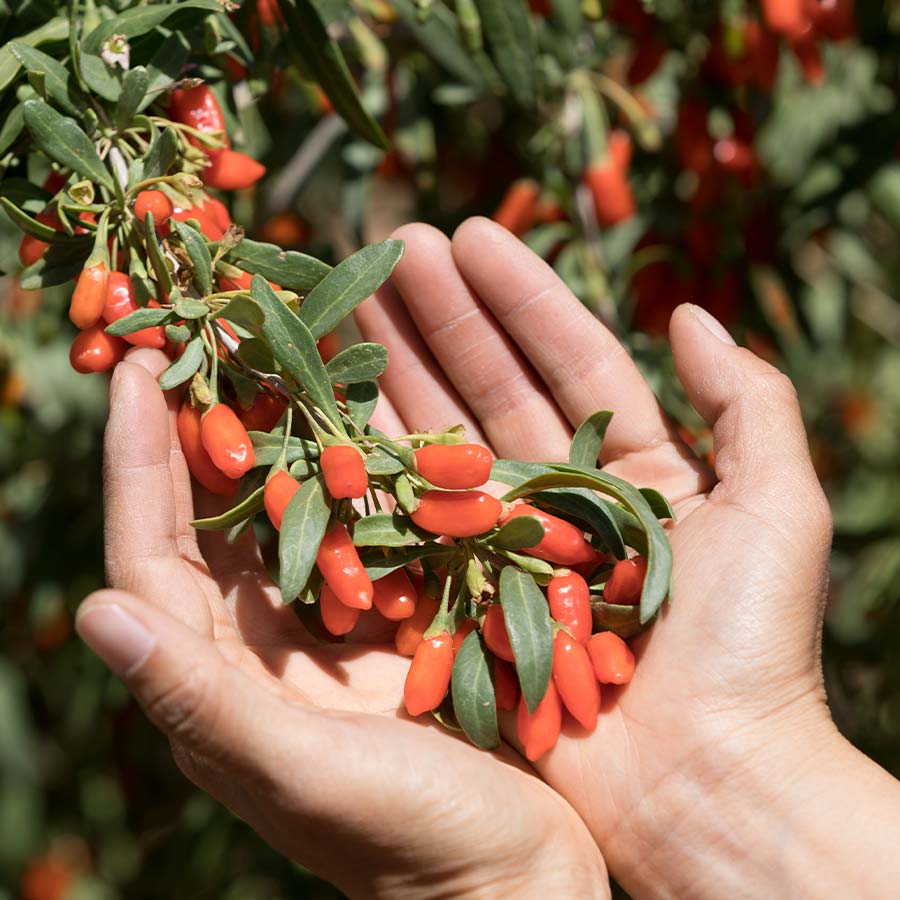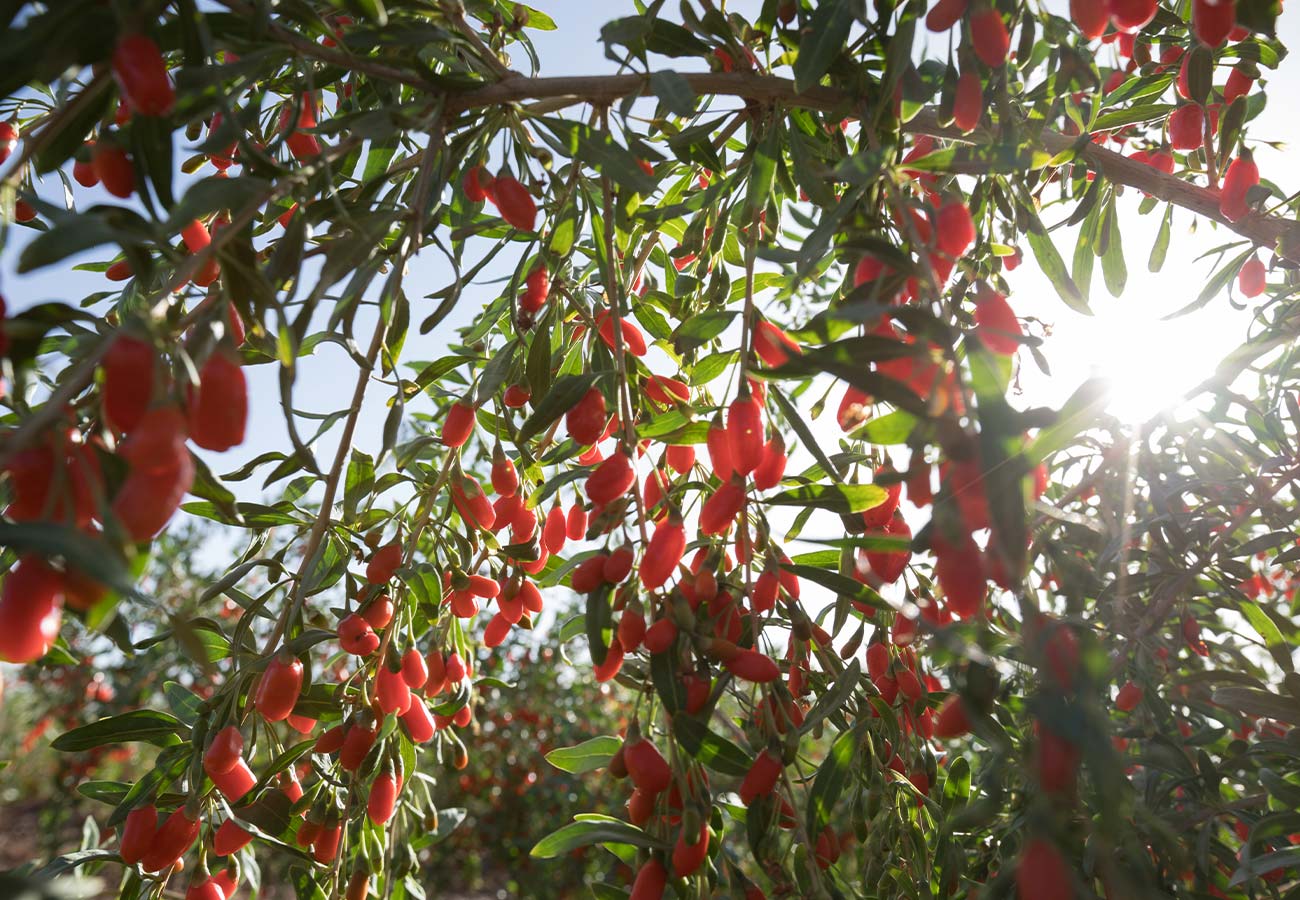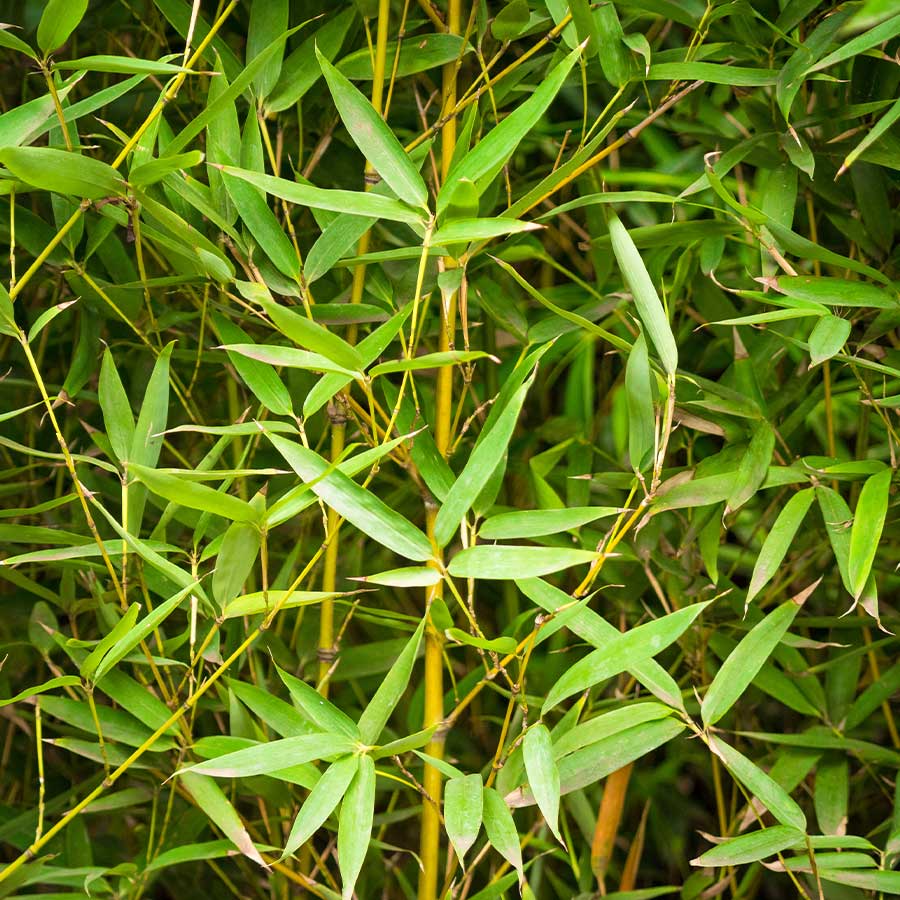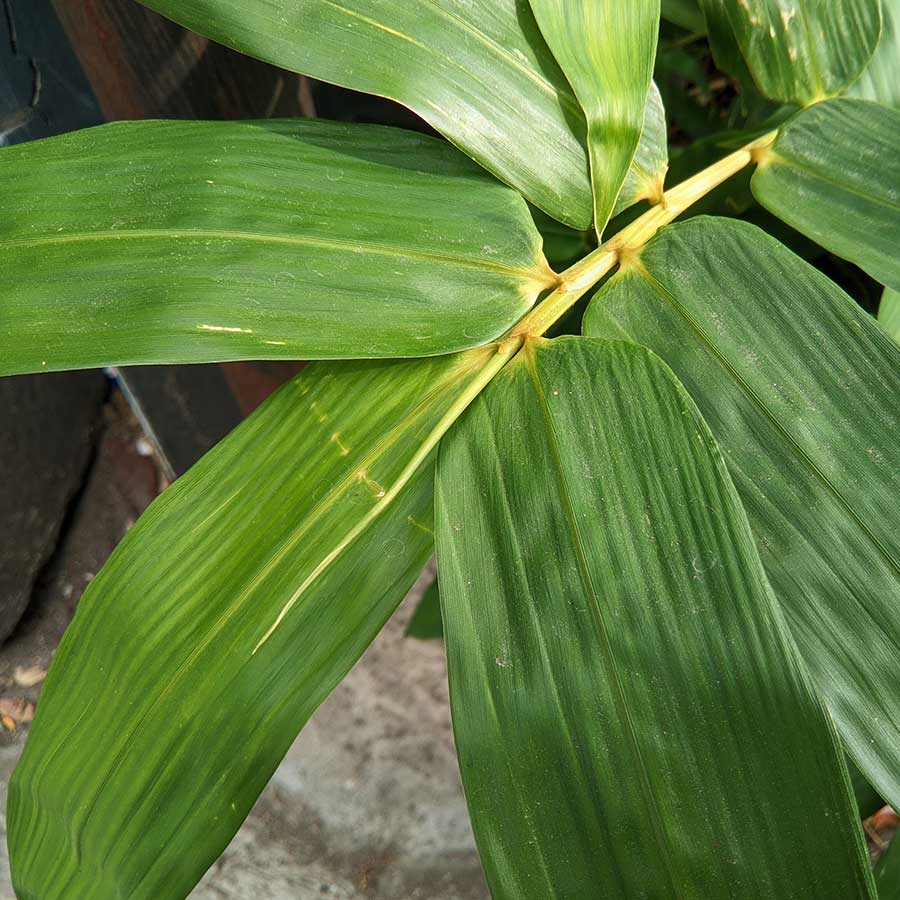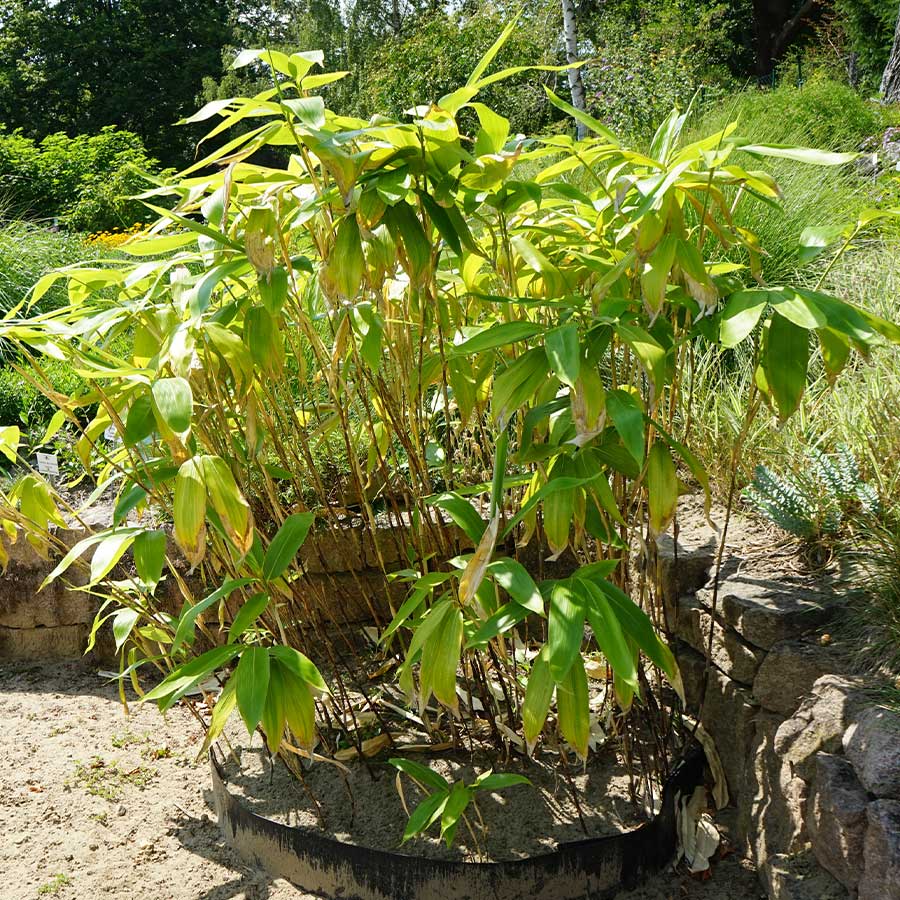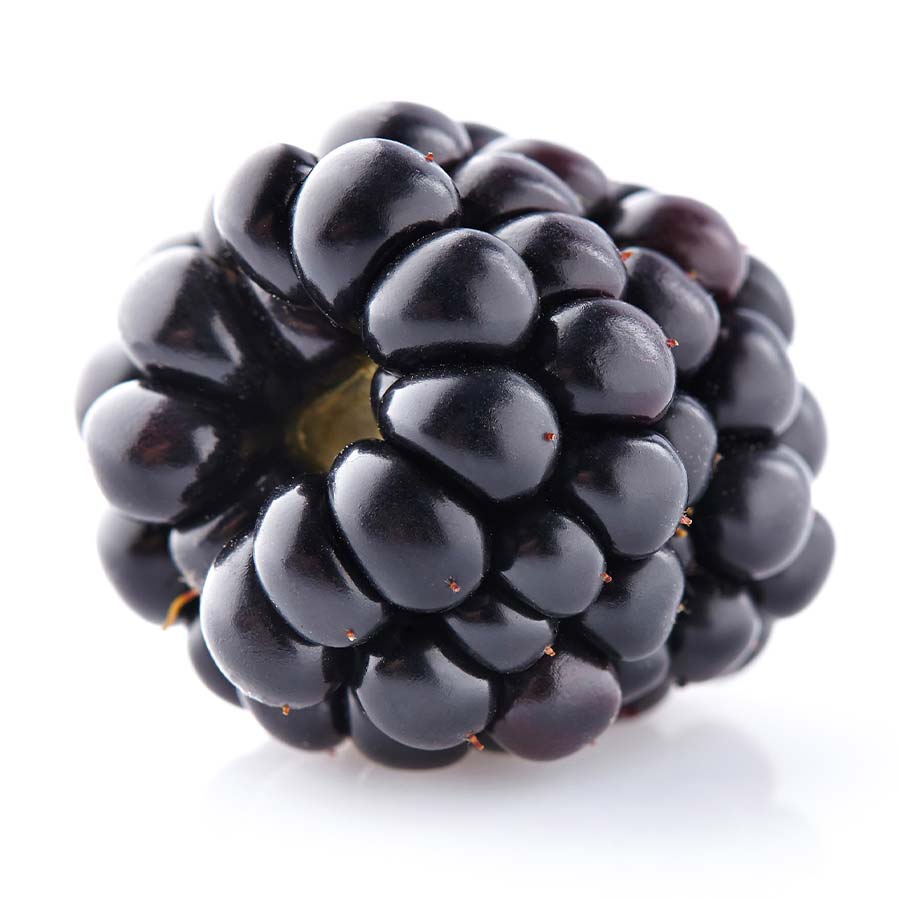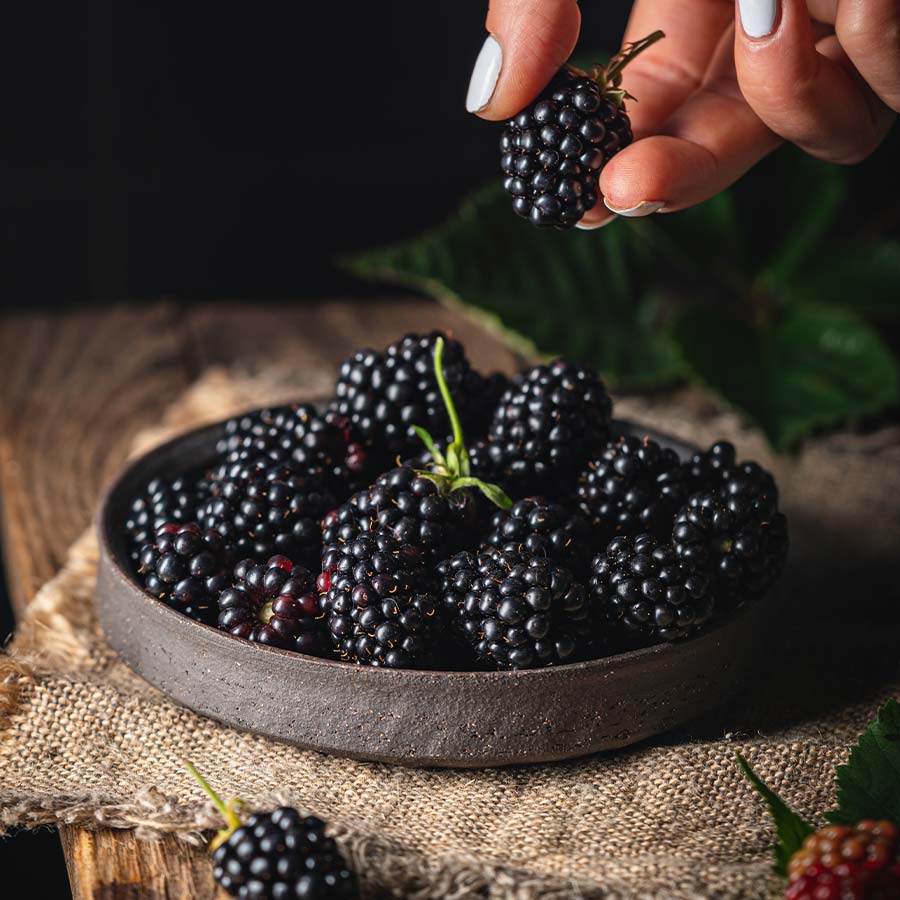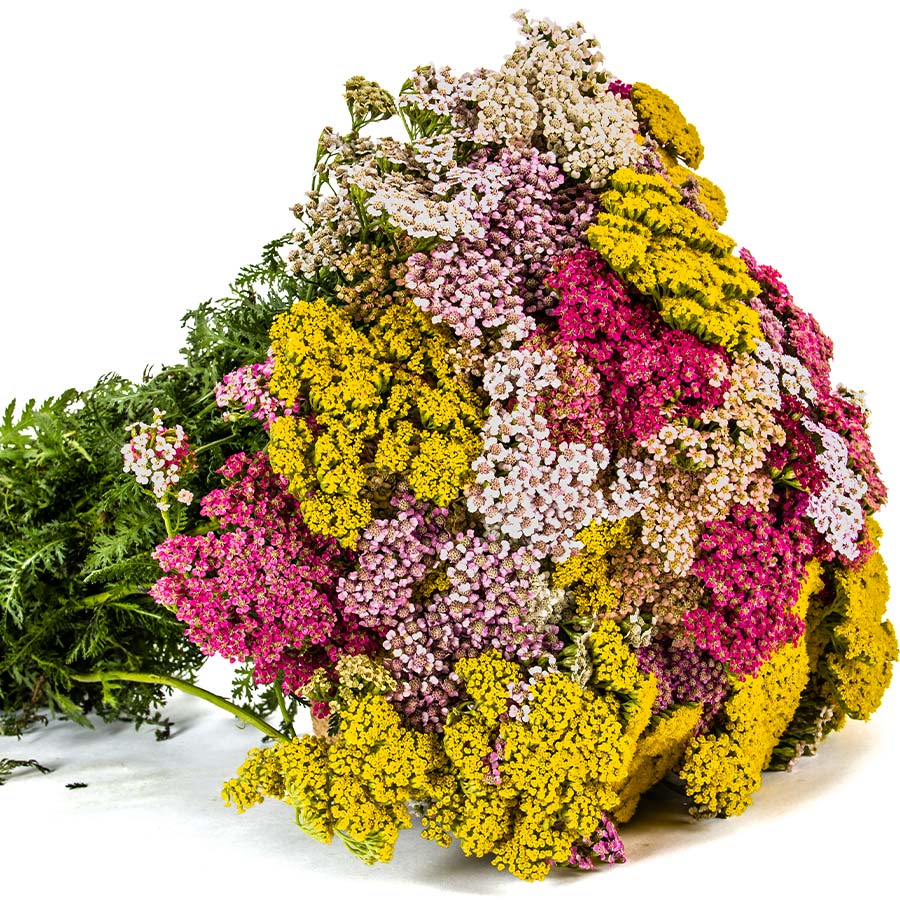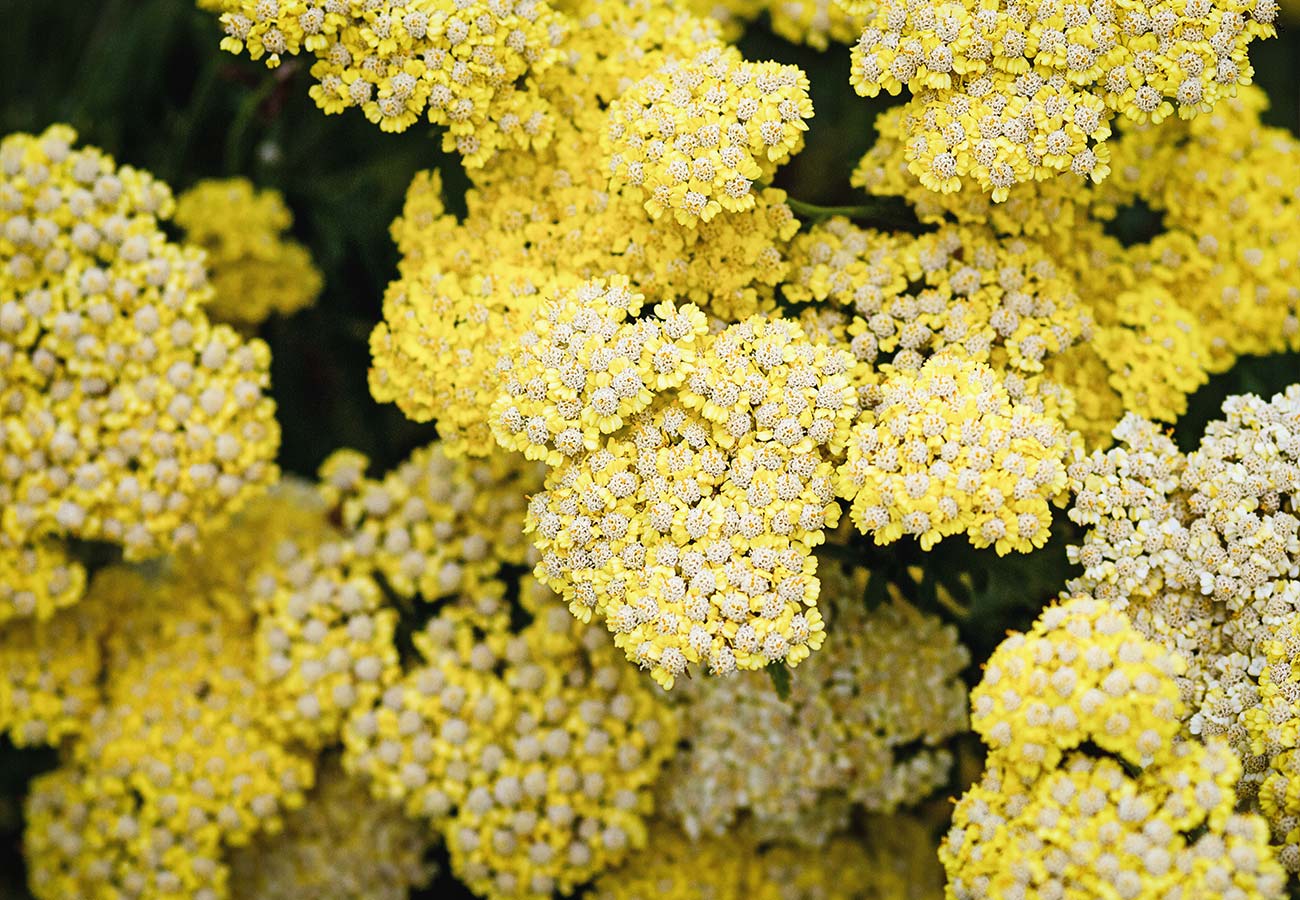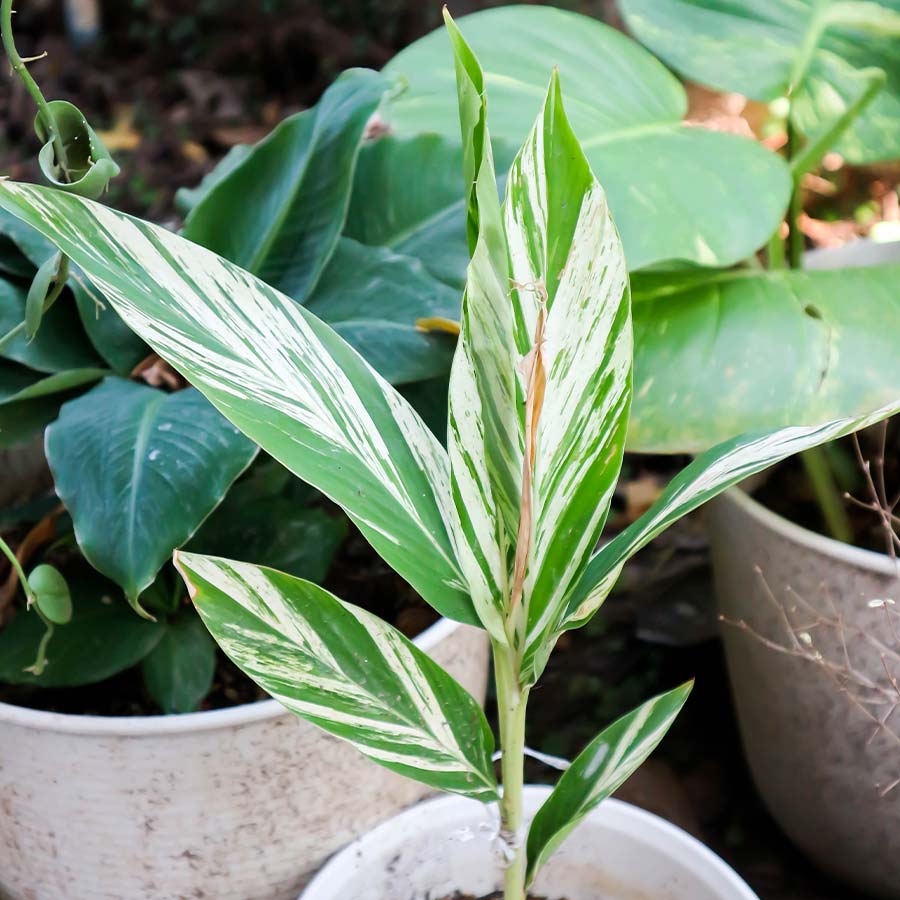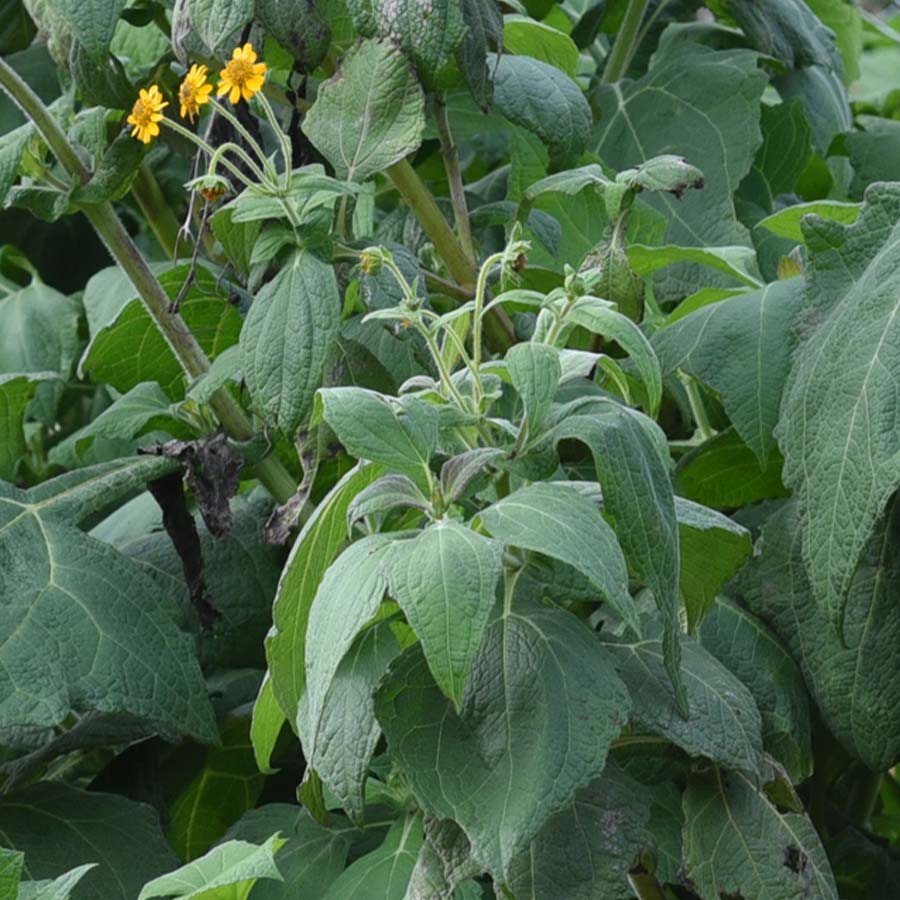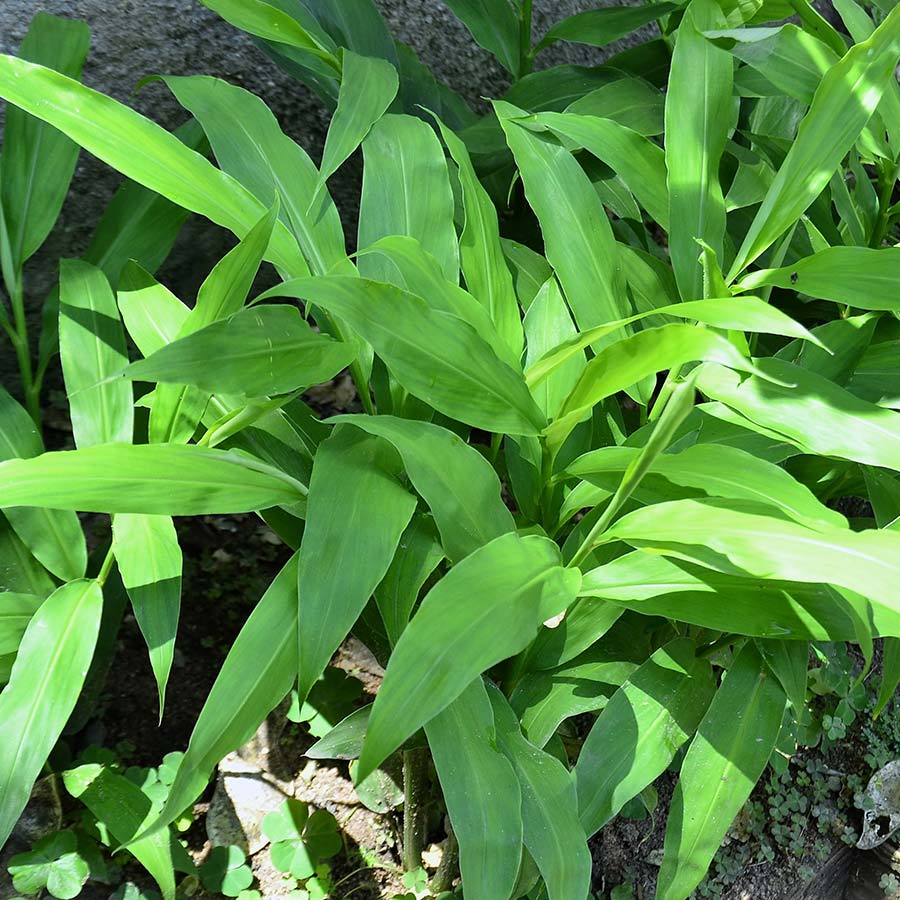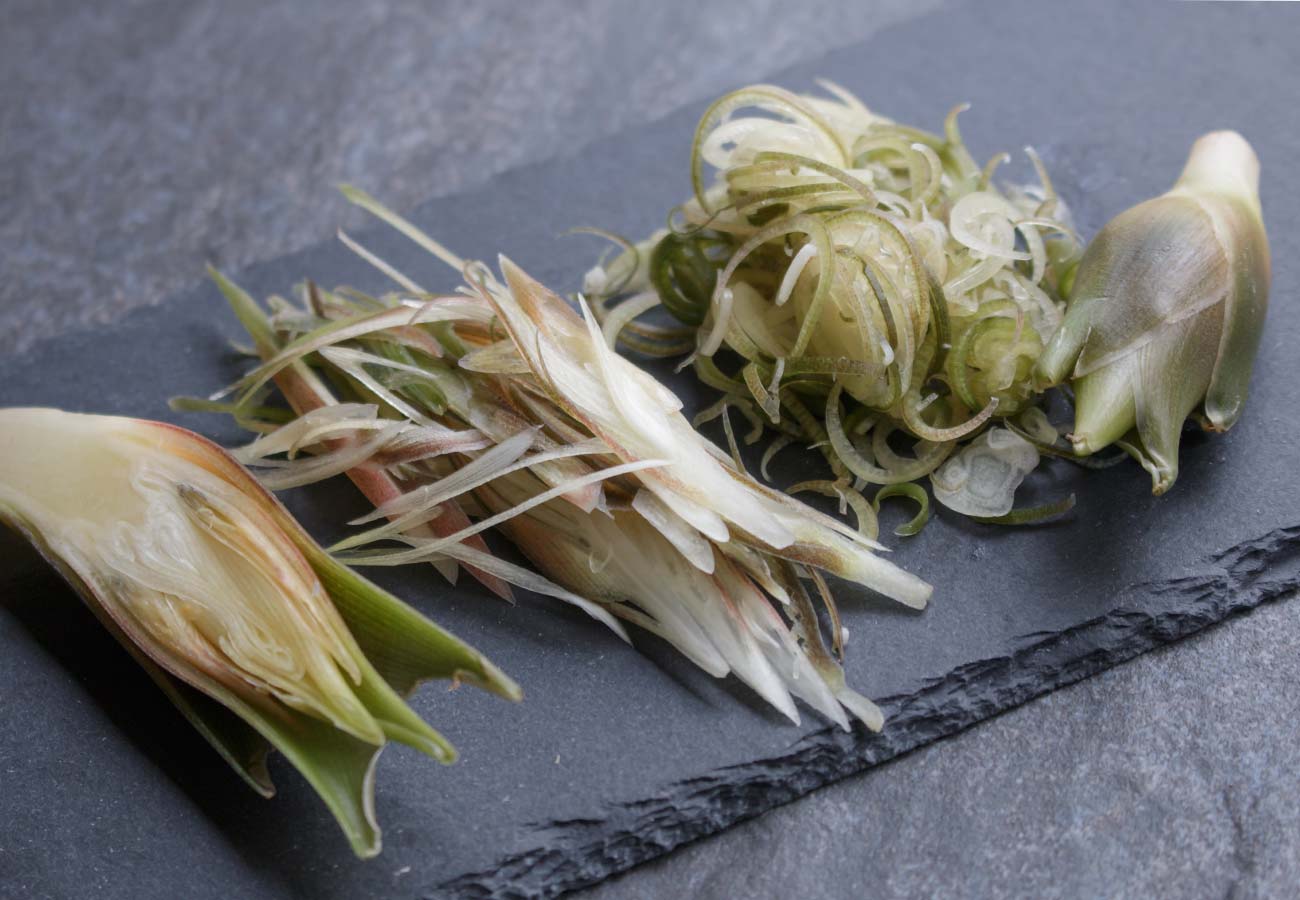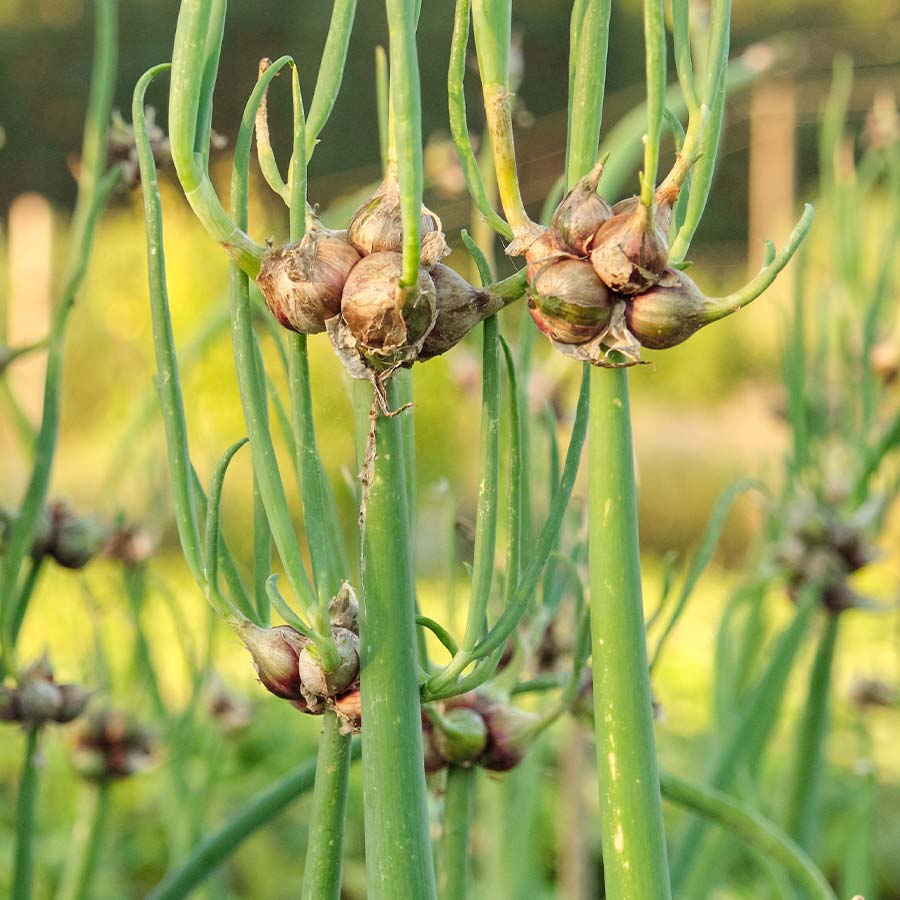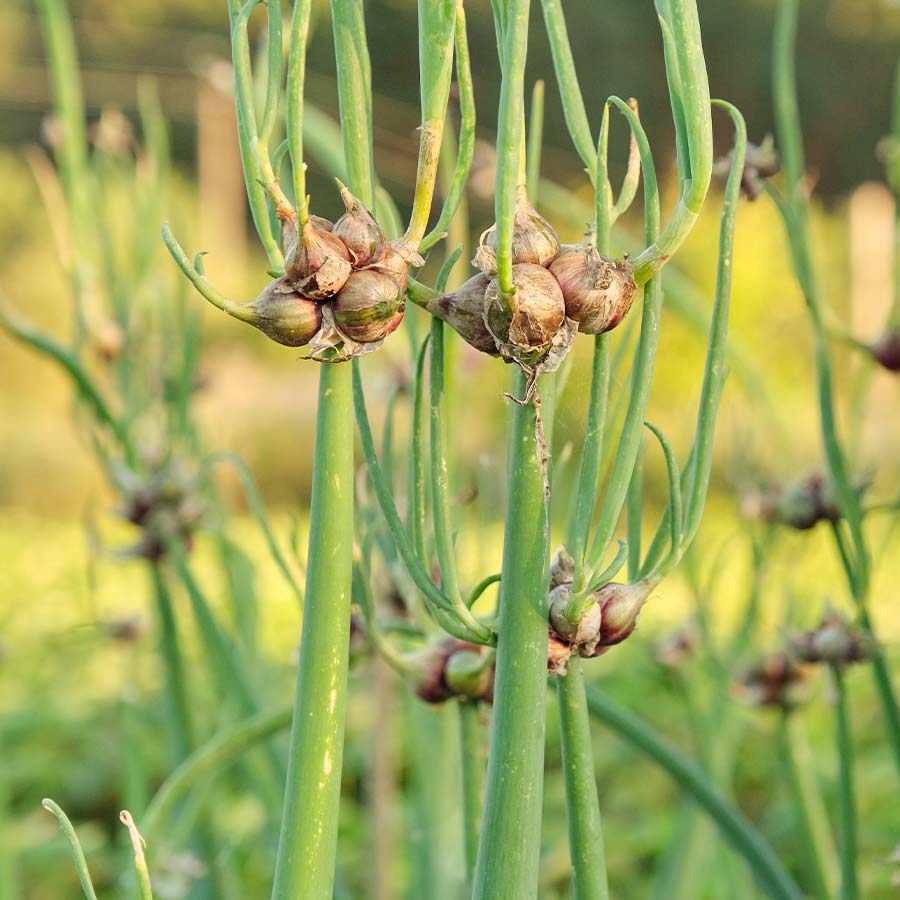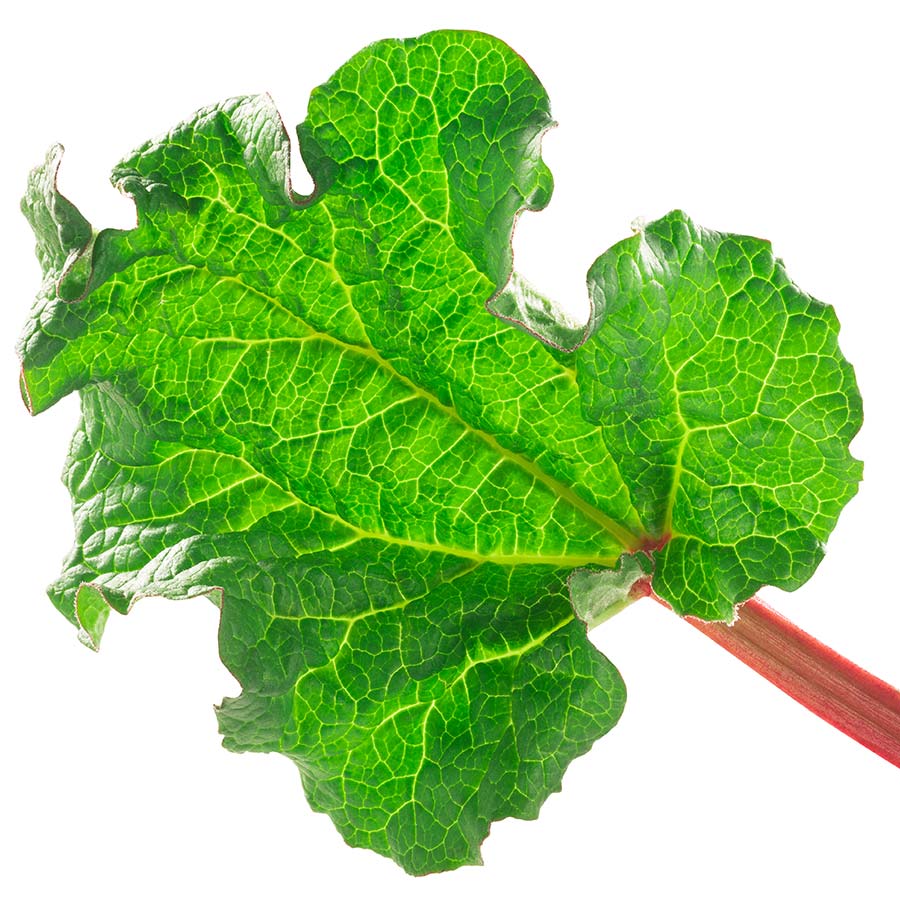
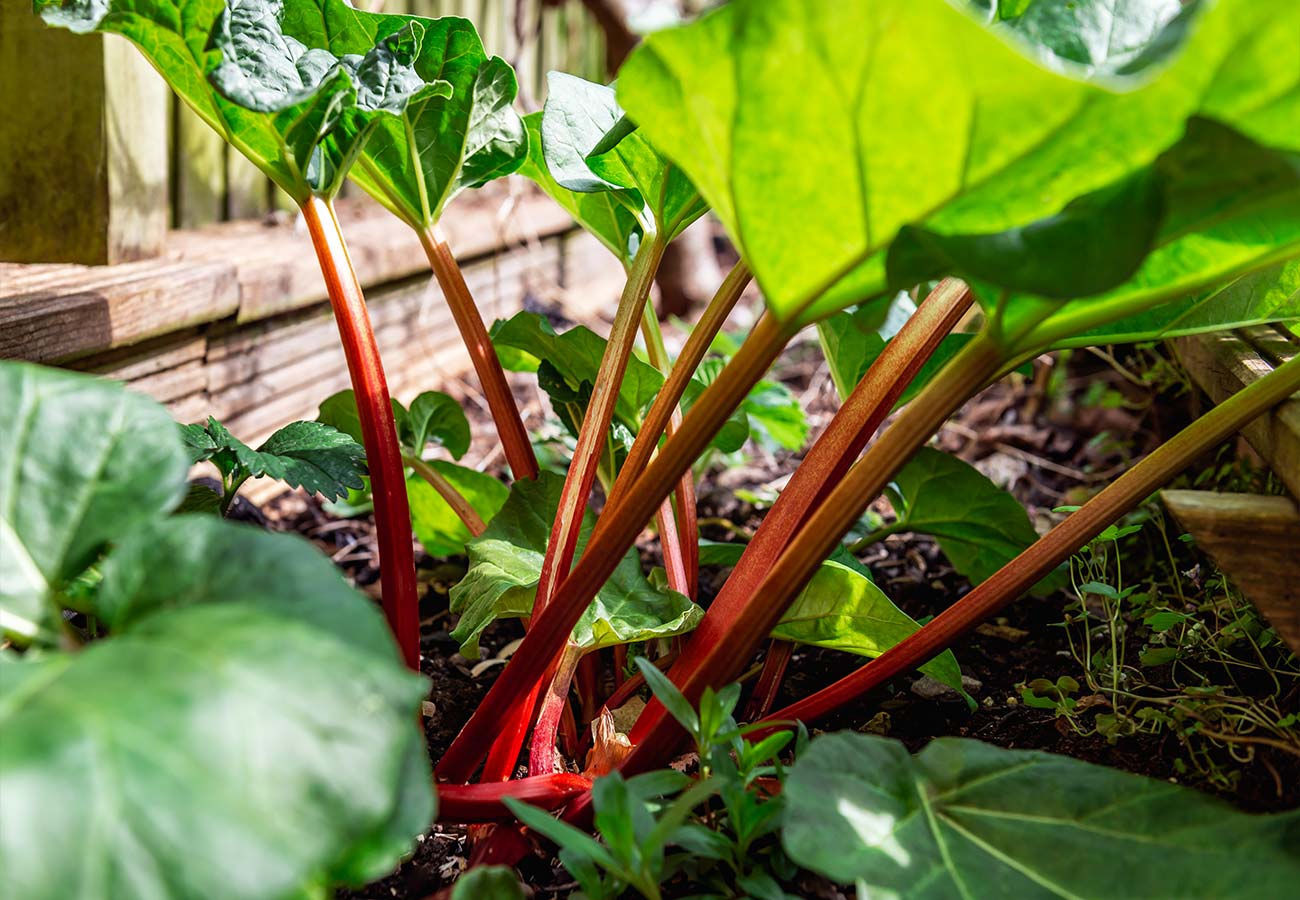
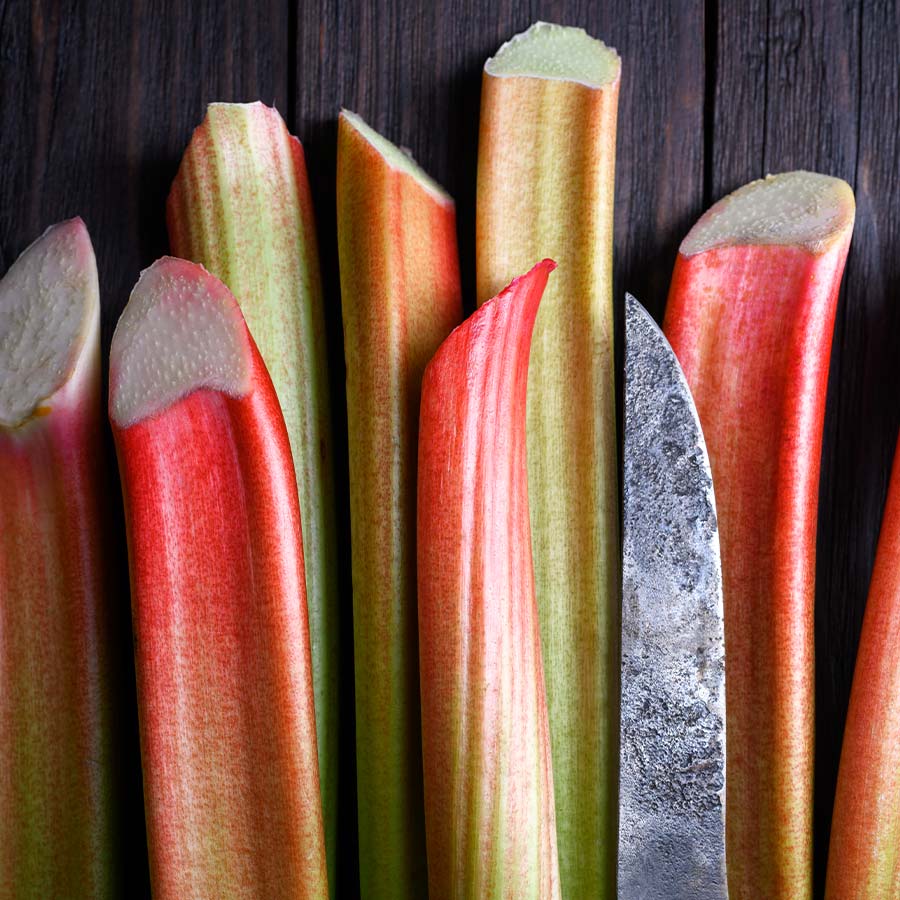
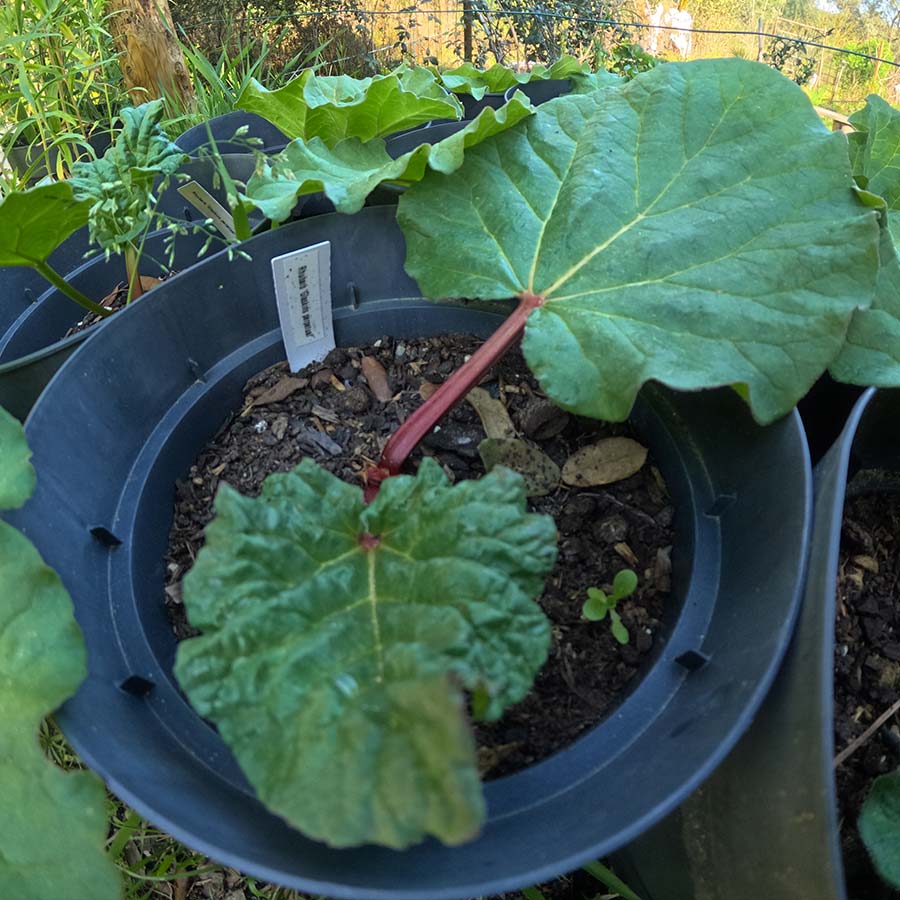
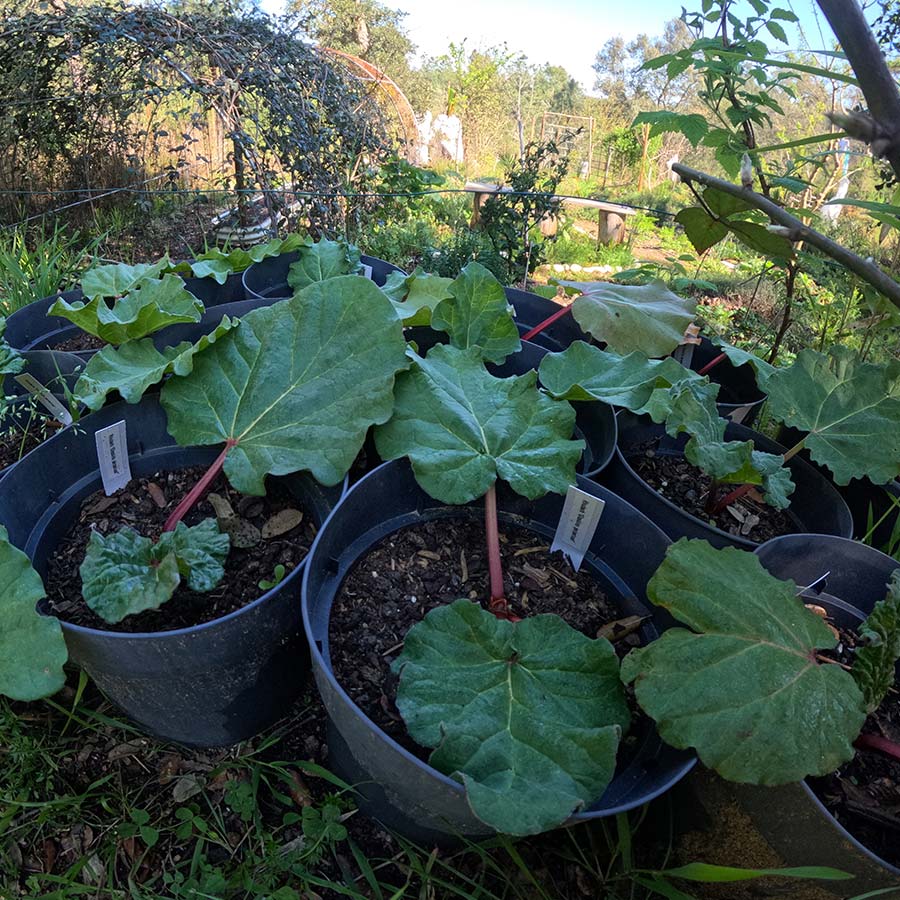





Rhubarb - Glaskins perpetual
Rhubarb 'Glaskins Perpetual' - Rheum rhabarbarum 'Glaskins Perpetual'.
An old English heirloom, this is the least acidic of all rhubarbs. Increasing in size and vigour each year, it would have to be the easiest vegetable to grow. Rhubarb grow deep roots and are good accumulators of minerals making for highly nutritious stalks. Cut tender stems in two years. These potted crowns have been grown from seed.
Rheum rhabarbarum is a deciduous PERENNIAL growing to 1.5 m (5ft) by 1.5 m (5ft) at a medium rate.
It is hardy to UK zone 4. The flowers are pollinated by Wind.
Suitable for: light (sandy), medium (loamy) and heavy (clay) soils and prefers well-drained soil. Suitable pH: mildly acid, neutral and basic (mildly alkaline) soils. It can grow in semi-shade (light woodland) or no shade. It prefers moist soil. It cannot tolerate atmospheric pollution.
Edible Uses
Leaf stem is eaten cookedn, it is used as a fruit substitute in spring, usually stewed with sugar and used in pies, jams etc. The juice strained from stewed rhubarb can add colour and flavour to a fruit punch. It is best not to eat large quantities of the stems because of their oxalic acid content and toxicity.
Immature flowers can also be cooked and used like cauliflower.
Medicinal Uses
Rhubarb has a long and proven history of herbal usage, its main effect being a positive and balancing effect upon the whole digestive system. It is one of the most widely used herbs in Chinese medicine.
The main species used is R. palmatum. Though the chemistry varies slightly, this species is used interchangeably. The root is anticholesterolemic, antiseptic, antispasmodic, antitumor, aperient, astringent, cholagogue, demulcent, diuretic, laxative, purgative, stomachic and tonic. Small doses act as an astringent tonic to the digestive system, whilst larger doses act as a mild laxative.
The root is taken internally in the treatment of chronic constipation, diarrhoea, liver and gall bladder complaints, haemorrhoids, menstrual problems and skin eruptions due to an accumulation of toxins. This remedy is not prescribed for pregnant or lactating women, nor for patients with intestinal obstruction.
Externally, the root is used in the treatment of burns. The roots are harvested in October from plants that are at least six years old, they are then dried for later use. A homeopathic remedy is prepared from the dried root, this is used especially in the treatment of diarrhoea in teething children.
Rhubarb as a Natural Pesticide
Rhubarb leaves naturally contain a low dose of oxalic acid, acting as a mild pesticide. While toxic for consumption, this feature provides a natural defense against pests. Additionally because there is such a low volume of oxalic acid in the mixture it remains harmless to our bees. In fact, rhubarb spray is often used to treat bees for varroa, (a mite which infects the apiary) as it has no affect on the bees or their honey.
Rhubarb leaf spray recipe:
1. Half fill a saucepan with rhubarb leaves
2. Fill remaining space with water and bring to the boil.
3. Allow the leaves to simmer for 5 minutes before allowing to cool.
4. Strain off the leaves and use a spray bottle to apply it to your plants.
I recommend wearing gloves whilst making this pesticide and do not use this pan for cooking
For more information you can visit the PFAF (plants for a future) website here.
1 Plant/crown supplied in 3 L pot
